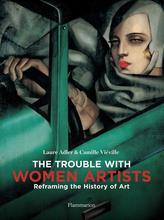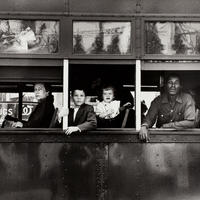More about Carrie Mae Weems
- All
- Info
- Shop
Works by Carrie Mae Weems

Contributor
Carrie Mae Weems is the only artist courageous enough to bite the hand that feeds her.
She has been a glaring critic of museum politics, especially the exclusion of African-Americans and women, from major museums and exhibitions. And despite her criticism (or maybe because of it) she became the first African-American woman to have a retrospective at the Guggenheim Museum. This is cool but also a little embarrassing for the Guggenheim because the show was in 2014 and was given limited space in the museum so half of the exhibition was cut. Weems stated about the exhibit, “Of course, I’m thrilled. I’m the first African-American woman to have a retrospective at the Guggenheim. Not to sound pretentious, but I should be having a show there. By now, it should be a moot point for a black artist—but it’s not.” Carrie Mae Weems is the magnifying glass that the white boy’s club of the museum world always feared would come along.
Born in Portland, Oregon in 1953, Weems, like most artists, always knew she was going to be an artist. In 1971, she attempted to move to New York with her then, two year old daughter and find work, but to no avail. Of course this wasn’t enough to keep Weems down. On her 20th birthday, she received her first camera and the rest is pretty much history. She attended University of California, San Diego, Berkeley, and CalArts having small exhibitions of her work along the way. She took a lil trip to Tijuana in 1995 to elope with her now husband, Jeffrey Hoone but then got right back to work. Her fame steadily built until she hit the literal jackpot and won the MacArthur “Genius” grant, because duh.
It’s been said that, “It is Weems’s conviction that radicalism and beauty are complementary, not antithetical, that gives her work its distinctive edge.” This results in museums being excited but also a little terrified to see what she comes up with next.
Sources
- Scott, Andrea K. "A Place At The Table". The New Yorker. N.p., 2014. Web. 15 Apr. 2017.
- "Carrie Mae Weems : Things Said About The Artist". Carriemaeweems.net. Web. 15 Apr. 2017.
- Sheets, Hilarie. "Carrie Mae Weems, Photographer And Subject". Nytimes.com. N.p., 2012. Web. 15 Apr. 2017.
- "Carrie Mae Weems". Carriemaeweems.net. Web. 15 Apr. 2017.
- Bey, Dawoud. "BOMB Magazine — Carrie Mae Weems By Dawoud Bey". Bombmagazine.org. N.p., 2009. Web. 15 Apr. 2017.
Featured Content
Here is what Wikipedia says about Carrie Mae Weems
Carrie Mae Weems (born April 20, 1953) is an American artist working in text, fabric, audio, digital images and installation video, and is best known for her photography. She achieved prominence through her early 1990s photographic project The Kitchen Table Series. Her photographs, films and videos focus on serious issues facing African Americans today, including racism, sexism, politics and personal identity.
She once said, "Let me say that my primary concern in art, as in politics, is with the status and place of Afro-Americans in the country." More recently, however, she expressed the view that "Black experience is not really the main point; rather, complex, dimensional, human experience and social inclusion ... is the real point." She continues to produce art that provides social commentary on the experiences of people of color, especially black women, in America.
Her talents have been recognized by Harvard University and Wellesley College, with fellowships, artist-in-residence and visiting professor positions. She taught photography at Hampshire College in the late 1980s and shot the "Kitchen Table" series in her home in Western Massachusetts. Weems is one of six artist-curators who made selections for Artistic License: Six Takes on the Guggenheim Collection, at the Solomon R. Guggenheim Museum in 2019/20. She is artist in residence at Syracuse University.
Check out the full Wikipedia article about Carrie Mae Weems














